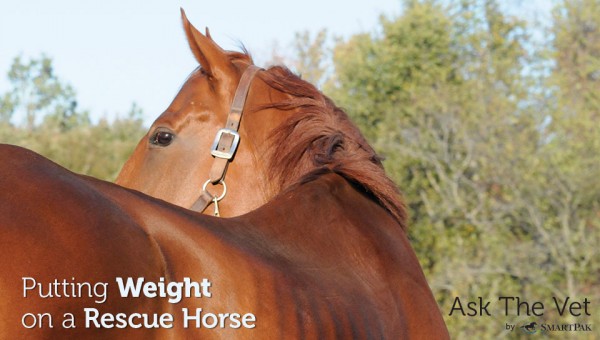Putting Weight on a Rescue Horse

I rescued three starved horses, two 12-year-old Percheron geldings and a 23-year-old QH mare. My vet told me to put them on some high fat high fiber, I was also told senior would be the best as its HF-HF, and easily digestible. What would you recommend? Thanks! – Jennie, via AAEP Ask the Vet
I’m impressed that you rescued three horses at one time! You’ve certainly got your hands full! Fortunately for you and for them my background is in horse rescue and I swore by the research that Dr. Carolyn Stull and her team did at the University of California-Davis. She found that starved horses were not unlike starved people (think POWs) in being susceptible to refeeding syndrome which can be fatal.
This syndrome happens when a person or animal goes without food for a long time, begins to breakdown their own body for nutrition, then is “rescued” and given food high in energy/calories, which then leads to electrolyte disturbances and even death. She found that small, frequent meals of alfalfa hay were the best way to bring starved horses back to health, as oat hay was too high in fiber and too low in other nutrients but grain was too concentrated a source of calories. Here is the research if you would like to share it with your veterinarian so you can develop a safe feeding plan.
My advice is don’t be in a hurry to fatten them up or to put their preventive care programs in order (vaccines, parasites, teeth, hooves). All of these procedures create stress and some, like immunizing, rely on the horse’s body to mount an appropriate response. If they’re truly a body condition score of 1, immunizations will likely slow down their recovery while conferring no protection. So give them time to eat and heal from the inside out; they’ll be plenty of time later to start providing good veterinary medical care!